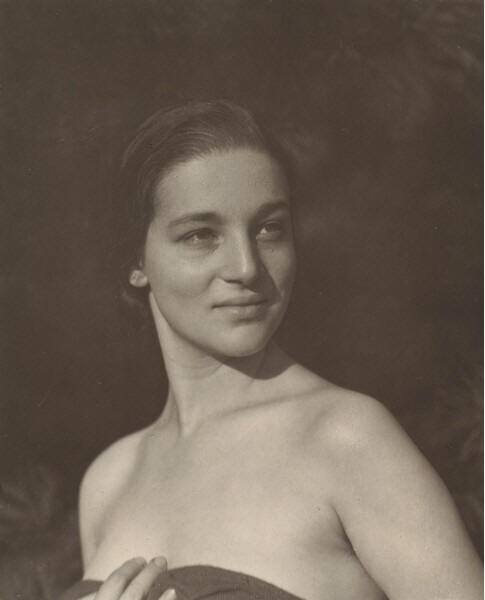

Queer Places:
Claudiusstraße 3, 10557 Berlin, Germany
 Eva Herrmann (February 8, 1901 in Munich
- September 7, 1978 in Santa Barbara) was a german-American painter, illustrator and cartoonist.
She has been romantically linked to Mercedes de Acosta and
Maria Nys.
Eva Herrmann (February 8, 1901 in Munich
- September 7, 1978 in Santa Barbara) was a german-American painter, illustrator and cartoonist.
She has been romantically linked to Mercedes de Acosta and
Maria Nys.
Eva Herrmann was born as the daughter of a wealthy American painter and a German woman. Both parents were Jewish. Her mother Anna Schlesinger (1875-1944), perished in Auschwitz.[1] His father Frank S. Herrmann (1866-1942) studied at the Munich Academy of Fine Arts at the end of the 19th century. Eva's sister Thea married the Austrian painter Wilhelm Thöny. Already in her time in Munich she became a close friend of the siblings Erika Mann and Klaus Mann.. In 1919 she accompanied her father to the USA, lived in New York, but returned to Europe for more or less long stays. At the beginning of the 1920s she lived in Berlin and became the partner of Johannes R. Becher, with whom she lived in his studio in Claudiusstraße. She spent the summer of 1923 in Wittdün on the North Sea island of Amrumwith Becher. For a time she was the girlfriend of Ricki Hallgarten, also a childhood friend of Klaus and Erika Mann. In the USA, Eva Herrmann's stylistic and technical versatility in the mid-1920s made her a sought-after and busy portrait cartoonist. Her work has been printed by numerous newspapers and magazines. She continued to keep in touch with Klaus and Erika Mann, and the three celebrated Klaus' 21st birthday together in New York in 1927. The 28-year-old artist made her breakthrough with the 1929 book On Parade, which included a collection of portraits of well-known American writers. But she also portrayed other well-known artists, directors and scientists. "This woman's style is not comparable to any of her colleagues: it is narrative, occasionally playful, and almost youthful in appearance."[2] Between 1932 and 1939 Herrmann traveled through Europe, portraying the most famous faces of her time, among others Bertolt Brecht, George Bernard Shaw and Aldous Huxley, and immediately sent the works to their editorial offices in the USA. She spent a long time in Sanary-sur-Merin southern France, where the Mann family lived in exile. From this time also came her lifelong friendship with Sybille Bedford, who was in Sanary with her much older sister Maximiliane von Dincklage, who was also working there as the wife of the Nazi secret agent Hans Günther von Dincklage as a spy for the Nazi security service of the Reichsführer SS.[3] In 1935 Herrmann became the mistress of the writer Lion Feuchtwanger and traveled with him to Moscow. Feuchtwanger worked with his local exile publisher to get Herrmann to design his books. After her move to Santa Barbara, Eva Herrmann's house was the meeting place of the German exile elites, with none of the visitors leaving the house uncaricatured. The Mann family lived nearby, and Thomas Mann called her "the Gemme" because she reminded him of Theodor Fontane's "Mathilde Möhring", because of her profile.[4] And Klaus and Erika Mann wrote about her: "This tender and pretty young lady knows how to be colossally evil without becoming clumsy and sick."[5] With Golo Mann, she conducted a lively correspondence. About a dozen letters from Golo Mann were received from 1936-1977, but no counter-letters. The Feuchtwanger family found their first reception with her in 1940, after her flight from Europe. "She was a witness of exile. Hardly any German writer who found refuge in California escaped her pen. She has also buttoned up painters and musicians, actors and directors, philosophers and scientists, quite occasionally even politicians or trade union leaders [...]" [6] Throughout her life, Eva Herrmann became interested in astrology and believed in supernatural perceptions. In 1941 she attended a spiritualist session for the first time and dealt with parapsychological phenomena. As she was older, she turned to her spiritual interests. As a medium, she recorded dictations of deceased personalities, which she published from 1976 under the title Von drüben and in which a post-mortem afterword by Thomas Mann is printed. .
My published books: